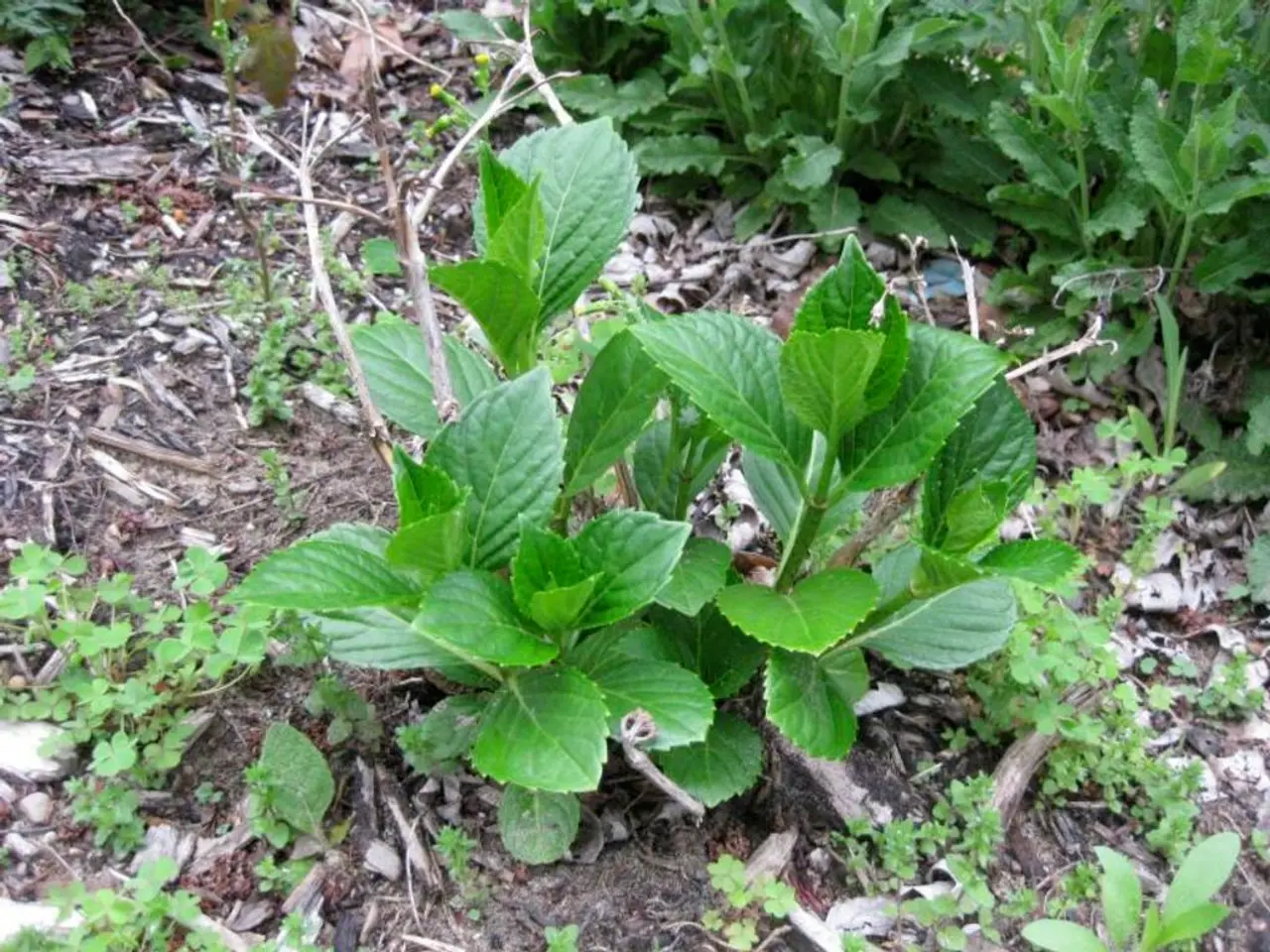Nurturing a Personal Herb Patch for Home Cultivation
In the quest to cultivate thriving herb gardens, whether indoors or outdoors, careful attention to location, growing medium, watering, and maintenance is crucial. These best practices will ensure healthy plants and consistent yields, providing fresh, flavorful herbs all year round.
**Optimal Location**
For indoor herb gardens, place them on a bright, south-facing windowsill to receive at least 6 hours of direct sunlight daily. Regularly rotate pots to ensure even light exposure and balanced growth. If natural light is insufficient, supplement with full-spectrum LED grow lights placed 6-12 inches above the plants, running 12-16 hours daily to mimic sunlight. Outdoors, most herbs prefer full sun, meaning at least 6 hours of direct sunlight daily. Some herbs like mint or shiso benefit from partial shade, especially during hot afternoon sun.
**Growing Medium and Potting**
Indoors, use Best Buy compost for containers or a well-draining potting mix enriched with slow-release controlled fertilizers. For outdoor gardens, opt for well-draining garden soil or raised beds with compost. When starting from supermarket herb pots, split the densely packed plants gently to reduce competition and repot in individual containers with fresh compost and fertilizer. In smaller spaces, soil-free hydroponic systems offer a low-maintenance alternative.
**Watering**
Herbs prefer consistent moisture but do not like to be waterlogged. Water when the top inch of soil feels dry. Indoor herbs may require watering more frequently due to limited soil volume. Avoid overwatering, which can cause root rot; good drainage is essential. Use a fine mist or gentle watering to keep seeds and young plants damp during germination and early growth stages.
**Maintenance**
Regular feeding with organic fertilizers during the growing season supports lush growth. Options include diluted liquid feeds (fish emulsion, seaweed extract, compost tea) every 2-4 weeks or incorporating worm castings and slow-release granules into the soil. Prune herbs regularly to promote bushier growth and prevent flowering, which can reduce leaf flavor concentration. Monitor for nutrient stress or signs of over-crowding and repot or divide herbs as needed to maintain vigor.
By following these best practices, you can achieve healthy and productive herb gardens both indoors and outdoors, yielding flavorful fresh herbs year-round. For established herb gardens, maintain them using organic remedies to prevent pests, mildew, mold, and other undesirables.
Herbs are versatile plants, used for both culinary and medicinal purposes. Growing herbs outdoors typically results in more flavor and higher yields, while growing them indoors offers easy access and no weeding. Herbs originating from the Mediterranean thrive in conditions similar to their native environment. Outdoor herb gardens need a location with plenty of sunshine and loamy soil or soil improved with compost, manure, or peat moss.
Growing herbs is relatively easy, as they can grow in various types of soil and do not require fertilizer. A container that can be moved in and out is an option for growing herbs, providing the benefits of both indoor and outdoor growing. Herbs are typically not bothered by diseases or insects. When watering an indoor herb garden, the soil should be kept moist but not soggy, allowing the topsoil to dry out before watering again. For an outdoor herb garden, it's recommended to test the soil pH, aiming for a range between 6.0 to 7.0.
In conclusion, whether you're a seasoned gardener or a novice, growing herbs can be a rewarding and enjoyable experience. With the right care and attention, you can harvest fresh, aromatic herbs to enhance your culinary creations and contribute to your overall well-being.
By carefully selecting a home-and-garden environment that mimics their native Mediterranean conditions, you can foster thriving outdoor herb gardens. Indoor setups can also be beneficial, allowing easy access and minimal weeding, provided they are placed on a bright windowsill with adequate sunlight for at least 6 hours daily. To keep your herb gardens flourishing, pay attention to their watering needs, and ensure proper drainage and regular feeding with organic fertilizers.
For a vibrant and bountiful home-and-garden life, incorporate herb gardens into your lifestyle. By growing your own herbs, you'll not only enjoy the freshest flavors for your culinary endeavors, but also the satisfaction of nurturing and maintaining a home-and-garden space that fosters both a thriving ecosystem and your well-being.




